Shell Modifications
Arch Fill
Description
- Material applied to plantar aspect of orthotic to add extra support to the arch
Location
- Chosen material applied to plantar aspect of device, ground flush with rear foot stabilizer, tapered on sides.
Material
- Orthotic shell
- Strip of specified material long enough to cover the arch (poron, p-cell, nyplex, EVA 35 or 55, rekoil, birko cork)
Indications
- Heavy/obese cases requiring extra support/reinforcement
- Extreme pes planus cases requiring reinforced MLA support
Contraindications
- Flexible devices (fill with increase rigidity)
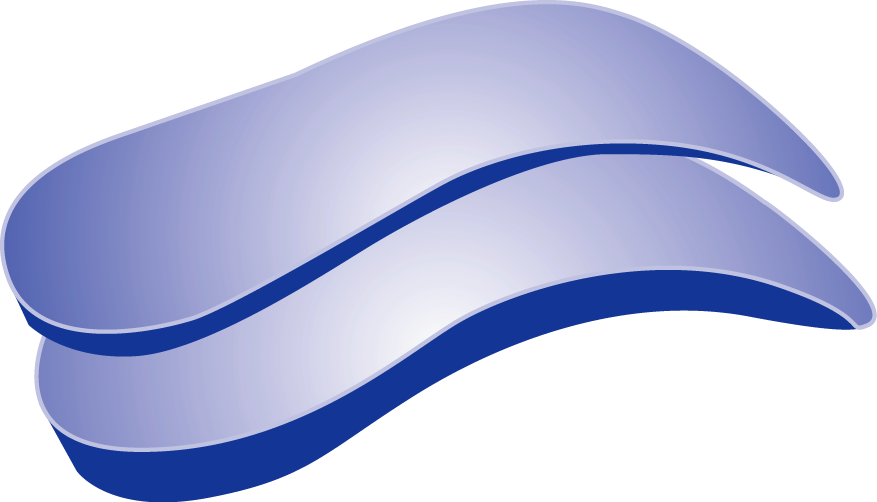
Heel Cup Depth
Description
- Device altered to deepen or lessen the area of the heel cup
Materials
- Same as shell
Location / Characteristics
- Standard heel cup depth = 16 mm, heel cup depth can be lowered to 0 mm for a flat heel cup or increased to 32 mm for a very deep cup
- A deeper heel cup will widen entire device slightly
Indications
- Addition of skive to a device
- Optimication of rear foot control
Contraindications
- Dress orthotics generally require lower heel cup depths for fitting
- Extra depth may cause footwear fitting problems due to the extra width or height of the device
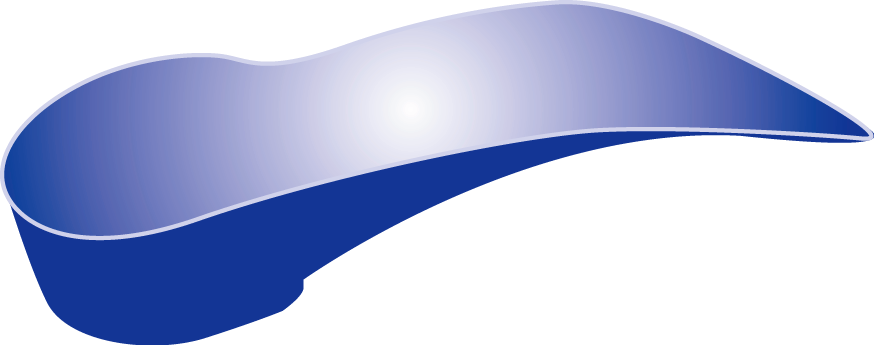
Fascial Accommodation
Description
- Groove incorporated into shell material in area of medial plantar for 1st met tendon. Allows met tendon to be lower in profile of orthotic.
Materials
- In shell
Location / Characteristics
- Groove incorporated into shell material in area of medial plantar fascial ligament/flexor hallucis brevis (as marked on casts)Contraindications
Indications
- Anatomically tight plantar fascia especially if prominent with dorsiflexion of 1st MPJ)
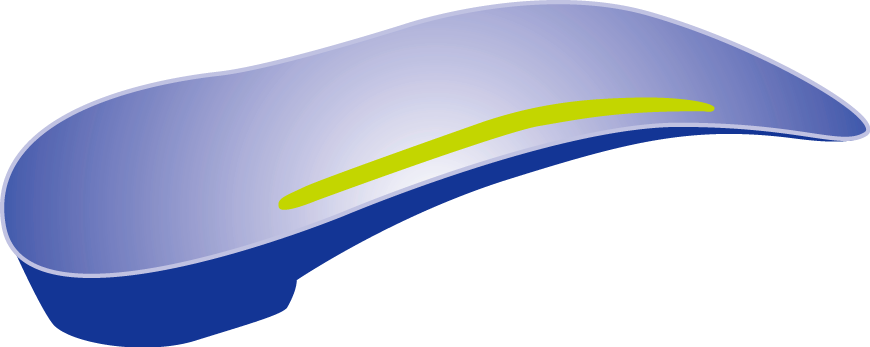
Flange - Medial
Description
Extra material added above the usual profile of the orthotic to stop foot from rolling in.
Material
- Same as shell
Location / Characteristics
- Medial border of device extended to encompass more of MLA
- Maximum control/contact area between foot and device
Indications
- Excessive pronation
- Medially deviated STJ axis
Contraindications
- Footwear which cannot accommodate extra width need for device
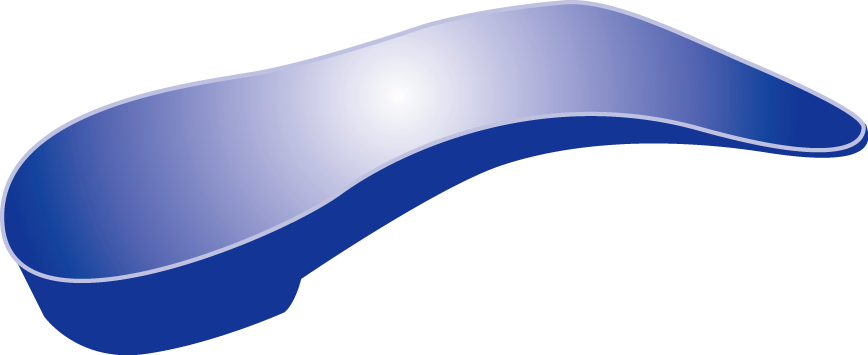
Flange - Lateral
Description
- Extra material added above the usual profile of the orthotic to stop foot from rolling out.
Material
- Same as shell
Location / Characteristics
- Lateral border of device extended to encompass more of the MLA
Indications
- Supinated foot type
- Chronic ankle instability
Contraindications
- Footwear which cannot accommodate extra width need for device
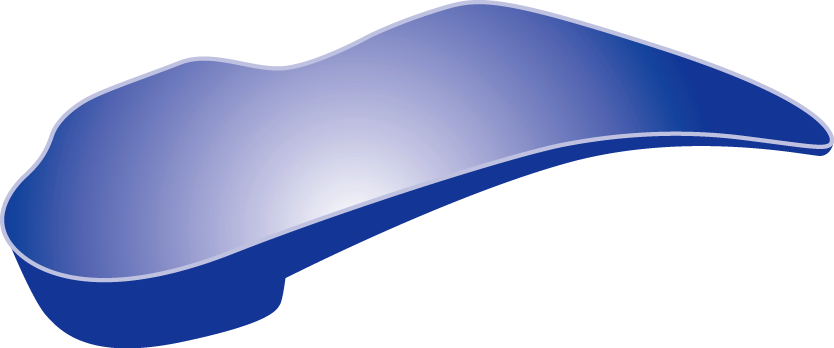
Shell Width
Description
- Wide and narrow shell width (in relation to foot)
Material
- Same as shell
Location / Characteristics
- Wide –> shell to be 3-4 mm wider than lab standard
- Narrow –> shell to be 3-4 mm narrower than lab standard
Indications
- Wide — > excessive pronator to maximize contact area with plantar surface
- Narrow –> slender, narrow foot-type, low profile footwear
Contraindications
- Wide –> low profile/narrow footwear
- Narrow –> wide footwear, deep heel cup (>16mm)
Shell Grind
Standard
Shell is tapered to reduce bulk and edges are feathered.
insert pic here
Narrow
Shell is further reduces.
insert pic here
Full
Shell is left a little thicker to keep full strength of material, especially around heel cup and along MLA.
insert pic here
Hourglass
Shell is narrowed bilaterally along MLA. This shape is useful for certain slim dress footwear.
insert pic here
1st Ray/Met Cutout (Shell)
Description
The corner of the shell is removed
Material
- Same as shell
Location / Characteristics
- Area of 1st metatarsal joint
Indications
- Dancer pads
- FHL accommodation
- Plantar flexed 1st ray
Contraindication
- Hallux limitus/rigidus
- 1st metatarsal pad join O/A
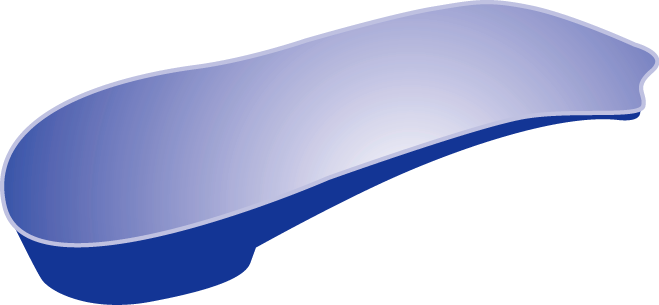
Partner With Us Today!
Get in touch with us at 705-342-7728 or at info@soundorthotics.com to find out more about how we can work with you to help your patients achieve pain-free, active living.

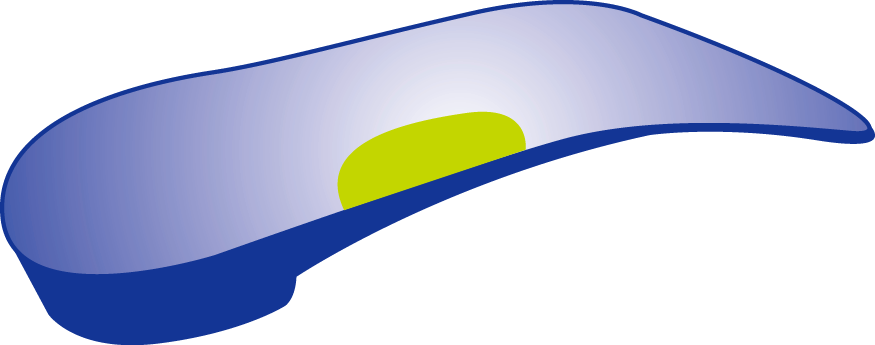
Post This!
Share this post with your friends!